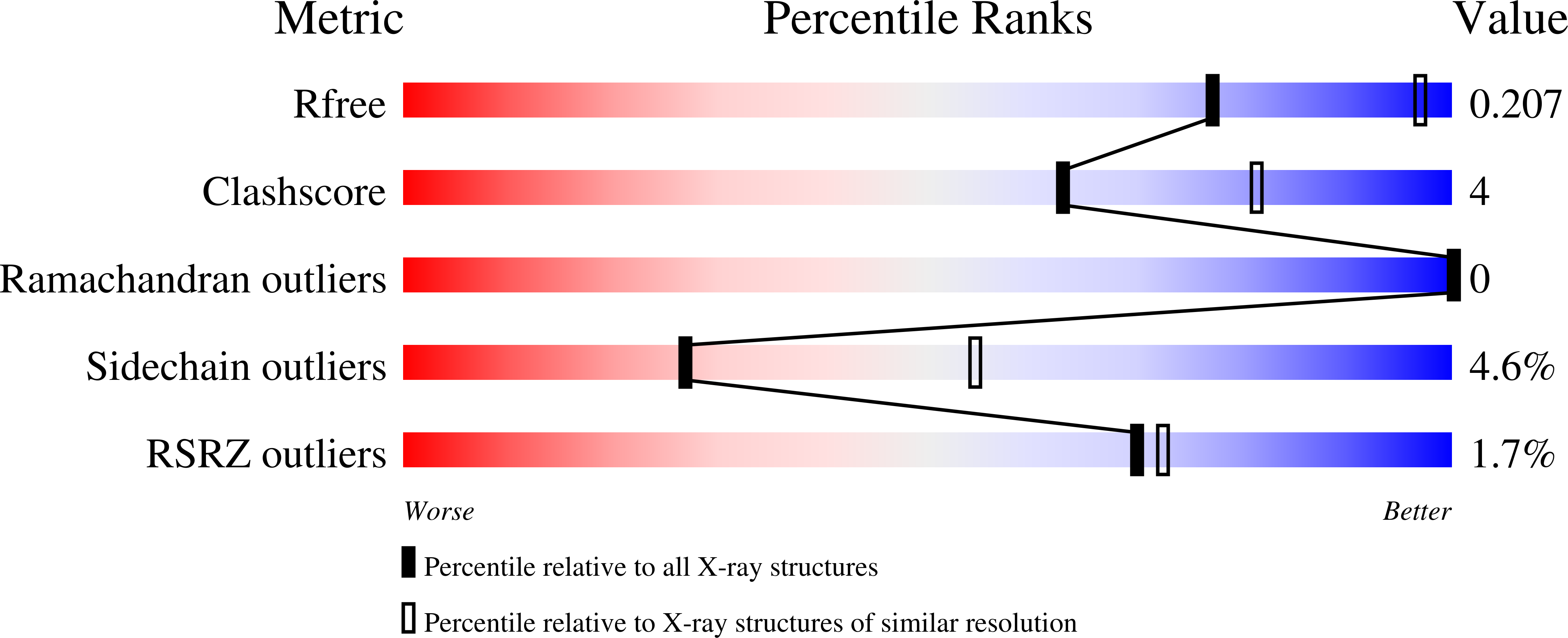Identifying ligand-binding hot spots in proteins using brominated fragments.
Grftehauge, M.K., Therkelsen, M.O., Taaning, R., Skrydstrup, T., Morth, J.P., Nissen, P.(2013) Acta Crystallogr Sect F Struct Biol Cryst Commun 69: 1060-1065
- PubMed: 23989163
- DOI: https://doi.org/10.1107/S1744309113018551
- Primary Citation of Related Structures:
4H9G, 4LBV, 4LBW, 4LBY, 4LBZ, 4LC0 - PubMed Abstract:
High-quality crystals of Thermus thermophilus EF-Tu in the GTP-bound conformation at 1.7-2.7 Å resolution were used to test 18 small organic molecules, all brominated for confident identification in the anomalous difference maps. From this relatively small collection, it was possible to identify a small molecule bound in the functionally important tRNA CCA-end binding pocket. The antibiotic GE2270 A is known to interact with the same pocket in EF-Tu and to disrupt the association with tRNA. Bromide could be located from peaks in the anomalous map in data truncated to very low resolution without refining the structure. Considering the speed with which diffraction data can be collected today, it is proposed that it is worthwhile to collect the extra data from fragment screens while crystals are at hand to increase the knowledge of biological function and drug binding in an experimental structural context.
Organizational Affiliation:
Department of Chemistry, Durham University, South Road, Durham DH1 3LE, England. m.k.groftehauge@dur.ac.uk


















